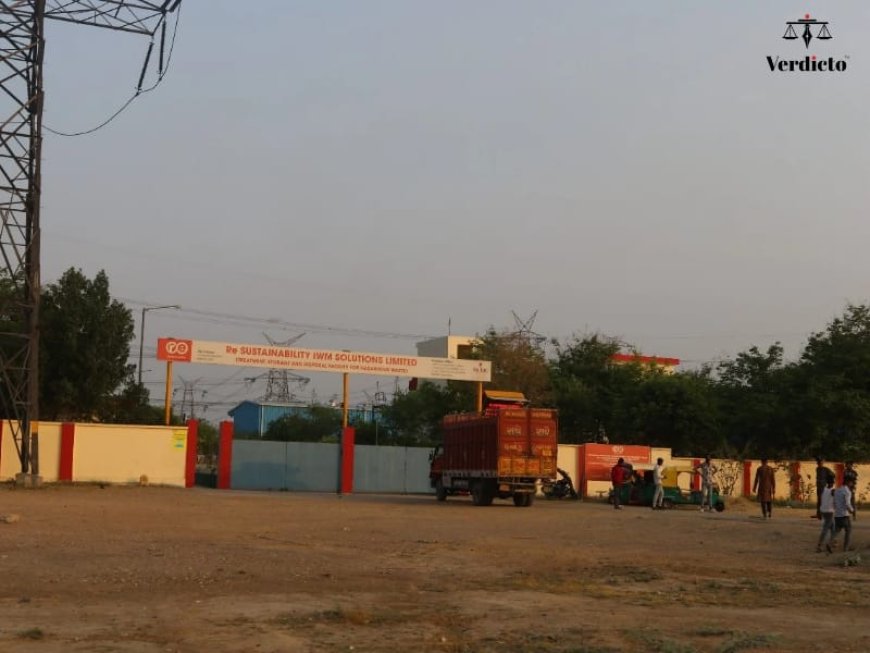Why Are We Burning Our Future?
Despite being marketed as “green,” WTE plants emit more carbon dioxide per unit of electricity than even coal. They discourage recycling and destroy materials that could be reused.

In Sanoth, a village tucked on the edges of Delhi near Bawana, the smell of burning waste is no longer an occasional nuisance; it’s a daily reality. The skies are smoky, the air is thick, and the fear among families, especially mothers like me, runs deep.
For years, Delhi’s garbage has found its way here; not into proper recycling systems, but into large Waste-to-Energy (WTE) incinerators. The plant already operating near our homes burns thousands of tons of mixed city waste each day. Now, the government is planning to add another WTE plant just 800 meters away from our village. Another fire, another furnace, more toxic air.
Let’s be clear: this isn’t just about waste. It’s about who carries the burden of that waste. And too often, that burden falls on people who have the least say, like the women and children of villages like mine.
WTE incinerators burn household garbage; plastic, food, metal, textiles to generate heat and electricity. It might sound like a clever solution. But the reality is quite different. Burning mixed waste releases toxic chemicals into the air, including dioxins, furans, heavy metals, and dangerous particles like PM2.5 that can enter our lungs and blood. The ash left behind is hazardous and often dumped without proper disposal. And these facilities are often placed in low-income or rural areas, far from where the waste actually comes from; a textbook example of environmental injustice.
Sanoth is now set to host another such plant, despite the existing one already taking a toll on our health. Children are coughing, elders struggle with respiratory issues, and illnesses we never saw a decade ago are becoming common. This is not development; it is environmental sacrifice, and we are the ones being sacrificed.
Around the world, countries are waking up to the damage WTE incineration causes — and stepping away from it.
In the United States, over 30 incinerators have shut down since 2000, and California closed its last one in 2023. The European Union is actively phasing out funding for these plants. Why? Because WTE is now recognised as one of the dirtiest, most expensive, and least sustainable forms of energy generation.
Despite being marketed as “green,” WTE plants emit more carbon dioxide per unit of electricity than even coal. They discourage recycling and destroy materials that could be reused. In many European cities, WTE plants are now seen as mistakes of the past, not models for the future. In Delhi, we are doing the opposite. Even as our city struggles with air pollution, the government is expanding its WTE footprint. Four such plants already exist, and yet none are fully compliant with environmental regulations. The Central Pollution Control Board recently told the National Green Tribunal that not a single WTE plant in Delhi follows the Solid Waste Management Rules of 2016.
Despite this, we’re building more, including the one now threatening Sanoth village. India’s waste is mostly organic and wet, making it unsuitable for burning. Burning low-calorific-value waste creates more pollution and less power. We have learnt that even the CSIR-NEERI (National Environmental Engineering Research Institute) has warned that this waste composition makes incineration unviable and unsafe. Meanwhile, informal waste workers, who recycle more than 2,000 tons of waste daily, are being sidelined. Their livelihoods are being destroyed as recyclable materials are redirected into incinerators instead of being reused. This isn’t just a public health issue; it’s a social justice crisis.
There are better solutions, and they’re not hypothetical.
Source segregation of waste (wet, dry, hazardous) can drastically reduce what ends up in landfills or incinerators.
Composting and biogas plants can handle organic waste safely and locally.
Recycling ecosystems, including informal waste workers, must be supported — not ignored.
Decentralised waste processing can create jobs, reduce transportation costs, and avoid the massive pollution that comes with mass incineration.
Public education and enforcement of plastic bans and waste rules must be prioritised.
These are not just dreams. They are proven solutions being implemented in other parts of the world, and even in some parts of India. But they require vision, leadership, and, most importantly, the will to listen to the communities most affected by this crisis.
We, the residents of Sanoth, have been protesting peacefully since December 2024. This week marked 150 days of our sit-in. We mothers and grand mothers, with a lot of hope have also submitted a detailed letter to the Hon’ble Chief Justice of India, supported by evidence and scientific reports. But our struggle is more than documents and data. It’s about the right of every child to breathe clean air. As a mother, I don’t need to read every report to know that something is terribly wrong. I can see it in the eyes of my children when they struggle to sleep, when they fall sick more often, when they ask why the sky looks grey. Bawana is not asking for special treatment. We are asking for fairness. For dignity. For the right to live. For the right to breathe clean air and drink clean water.
The time to rethink Delhi’s waste strategy is now, before we burn away not just garbage, but our health, our futures, and our children’s chance at a better life.
The writer of the Article, Bimla is a schoolteacher and mother living in Sanoth village, Delhi. She is one of many residents raising concerns about the harmful effects of Waste-to-Energy incineration near residential areas.







